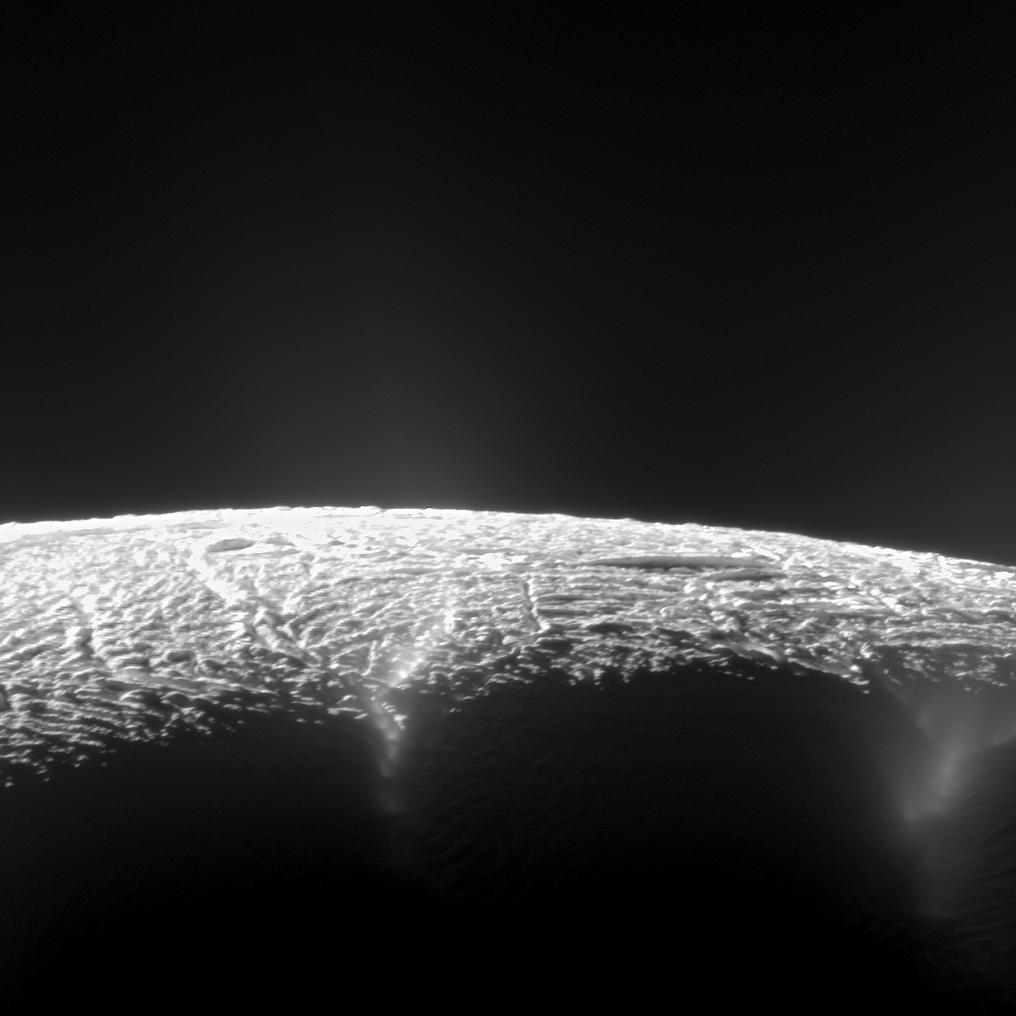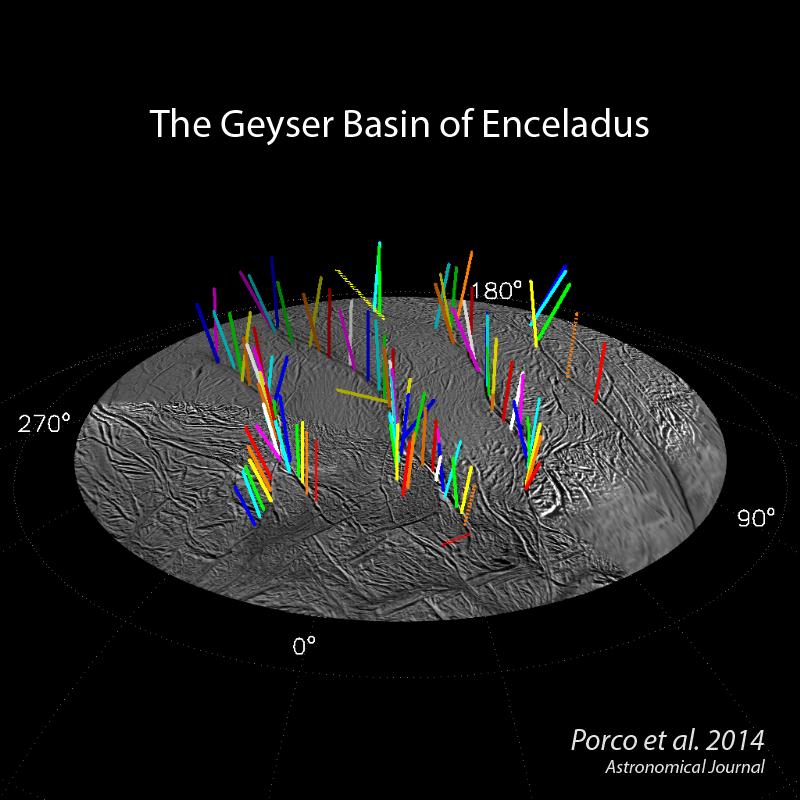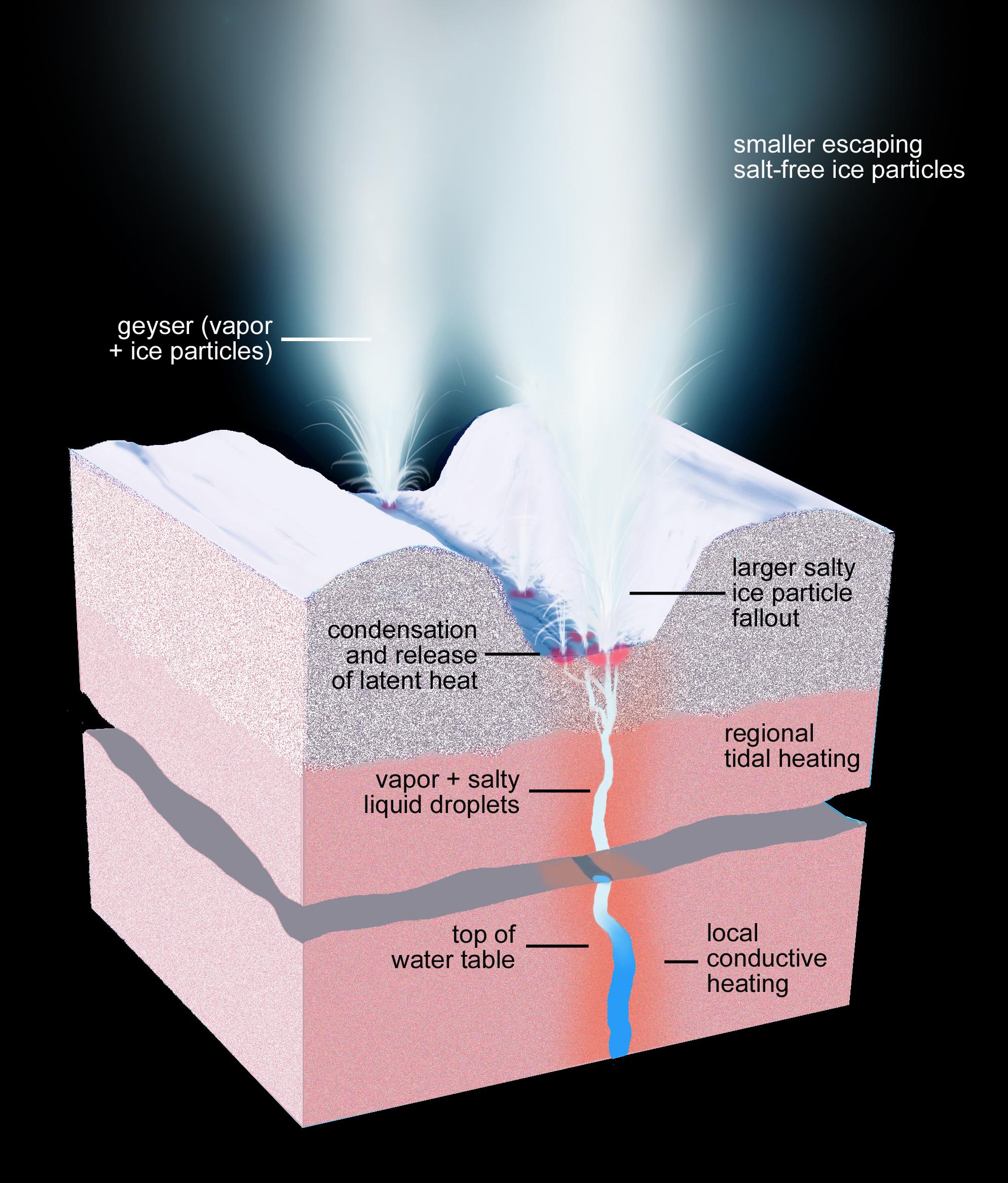
The icy Saturn moon Enceladus sports at least 101 geysers, which reach all the way down to the satellite's subsurface ocean, new research suggests.
Scientists mapped out 101 geysers of water vapor and ice near Enceladus' south pole after analyzing images captured by NASA's Cassini spacecraft over a period of nearly seven years. This effort also helped astronomers trace the eruptions to their source, researchers said.
Cassini first spotted geysers erupting from four "tiger stripe" fractures on Enceladus — a 310-mile-wide (500 kilometers) moon covered by an icy shell — in 2005, but their origin remains the subject of some debate to this day. [Photos: Enceladus, Saturn's Cold, Bright Moon]

For example, some scientists think the geysers are driven by frictional heat generated when the tiger stripes' walls rub together. This scenario implies that the plumes consist of material from Enceladus' surface, or just beneath it.
But other researchers posit that the geysers reach all the way down to the ocean of liquid water that sloshes beneath Enceladus' icy shell, and that they blast into space when the fractures open up. If this is the case, future spacecraft that collect material from the plumes could sample this ocean without even touching down on the moon — a prospect that excites astrobiologists, who view Enceladus as one of the solar system's best bets to host alien life.
Researchers compared the locations of the newly mapped 101 geysers with precision data gathered in 2010 by Cassini's heat-sensing gear. They determined that each eruption is associated with a hot spot measuring just a few dozen feet across — too small to be generated by fracture walls rubbing together.
"Once we had these results in hand, we knew right away heat was not causing the geysers, but vice versa," lead author Carolyn Porco, leader of the Cassini imaging team from the Space Science Institute in Boulder, Colorado, said in a statement. "It also told us the geysers are not a near-surface phenomenon, but have much deeper roots."
Get the Space.com Newsletter
Breaking space news, the latest updates on rocket launches, skywatching events and more!
Those roots reach the moon's subsurface sea via unfrozen conduits in Enceladus' ice shell, the team concluded.

In a second study, astronomers found that Enceladus' overall geyser-generated plume varies in brightness as the moon makes its way around Saturn. The exact cause of the brightness variation remains a mystery, however.
Both new studies appear in the latest issue of the Astronomical Journal.
The $3.2 billion Cassini mission — a joint effort of NASA, the European Space Agency and the Italian Space Agency — launch in 1997 and arrived in orbit around Saturn in 2004. The spacecraft is scheduled to keep studying the ringed planet and its many moons until September 2017, when it will perform an intentional death dive into the gas giant's atmosphere.
Follow Mike Wall on Twitter @michaeldwall and Google+. Follow us @Spacedotcom, Facebook or Google+. Originally published on Space.com.
Join our Space Forums to keep talking space on the latest missions, night sky and more! And if you have a news tip, correction or comment, let us know at: community@space.com.

Michael Wall is a Senior Space Writer with Space.com and joined the team in 2010. He primarily covers exoplanets, spaceflight and military space, but has been known to dabble in the space art beat. His book about the search for alien life, "Out There," was published on Nov. 13, 2018. Before becoming a science writer, Michael worked as a herpetologist and wildlife biologist. He has a Ph.D. in evolutionary biology from the University of Sydney, Australia, a bachelor's degree from the University of Arizona, and a graduate certificate in science writing from the University of California, Santa Cruz. To find out what his latest project is, you can follow Michael on Twitter.









